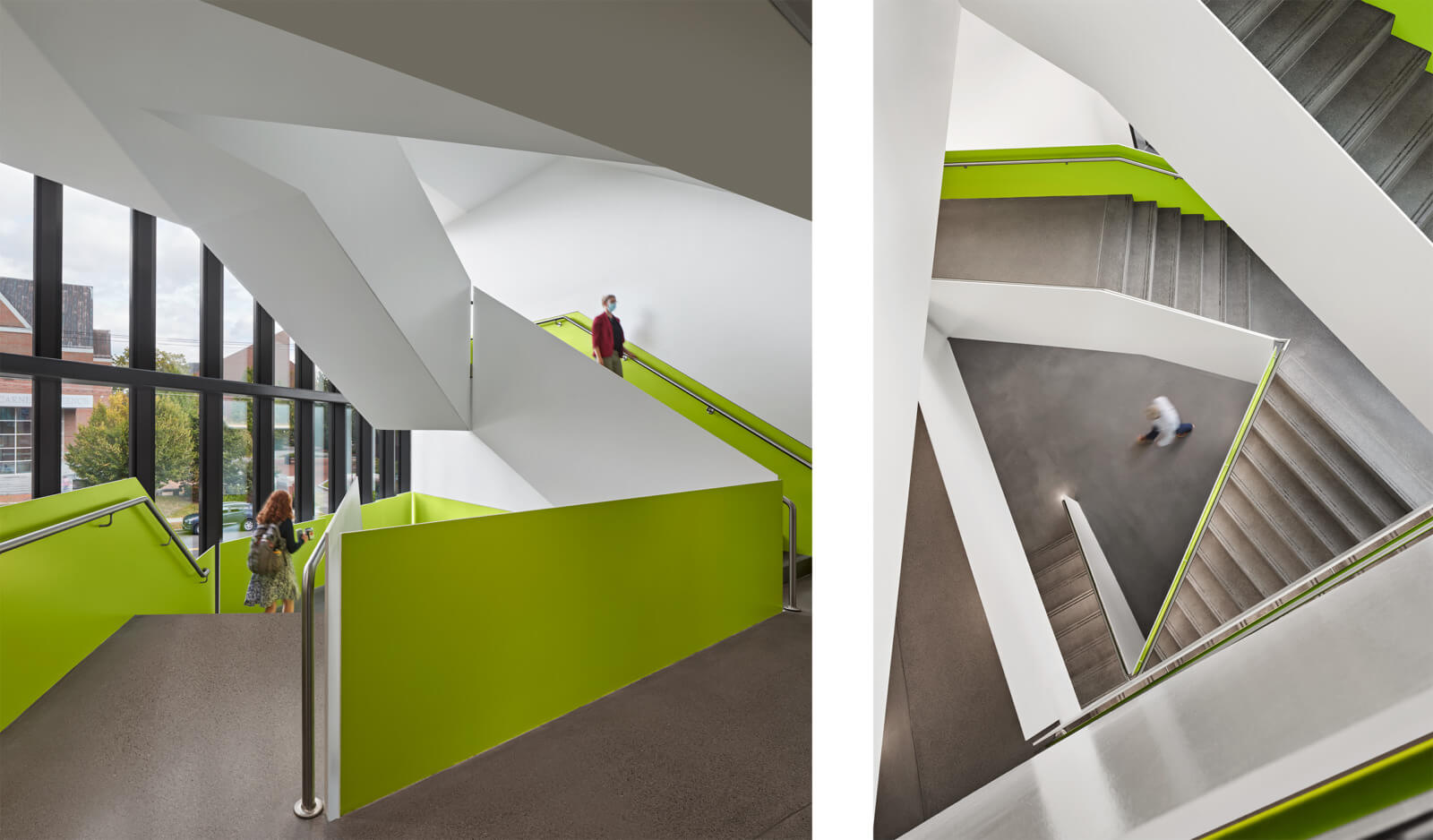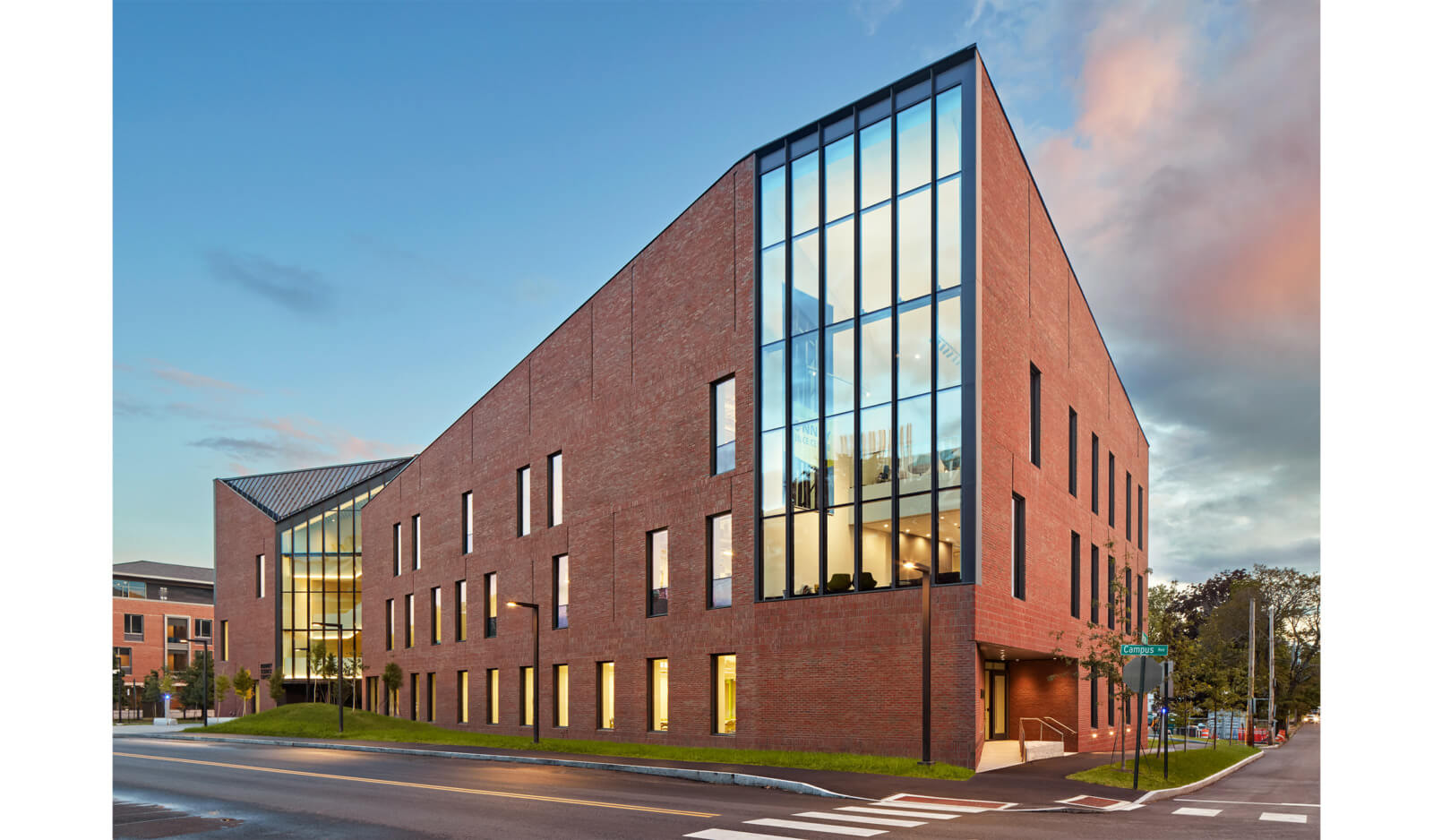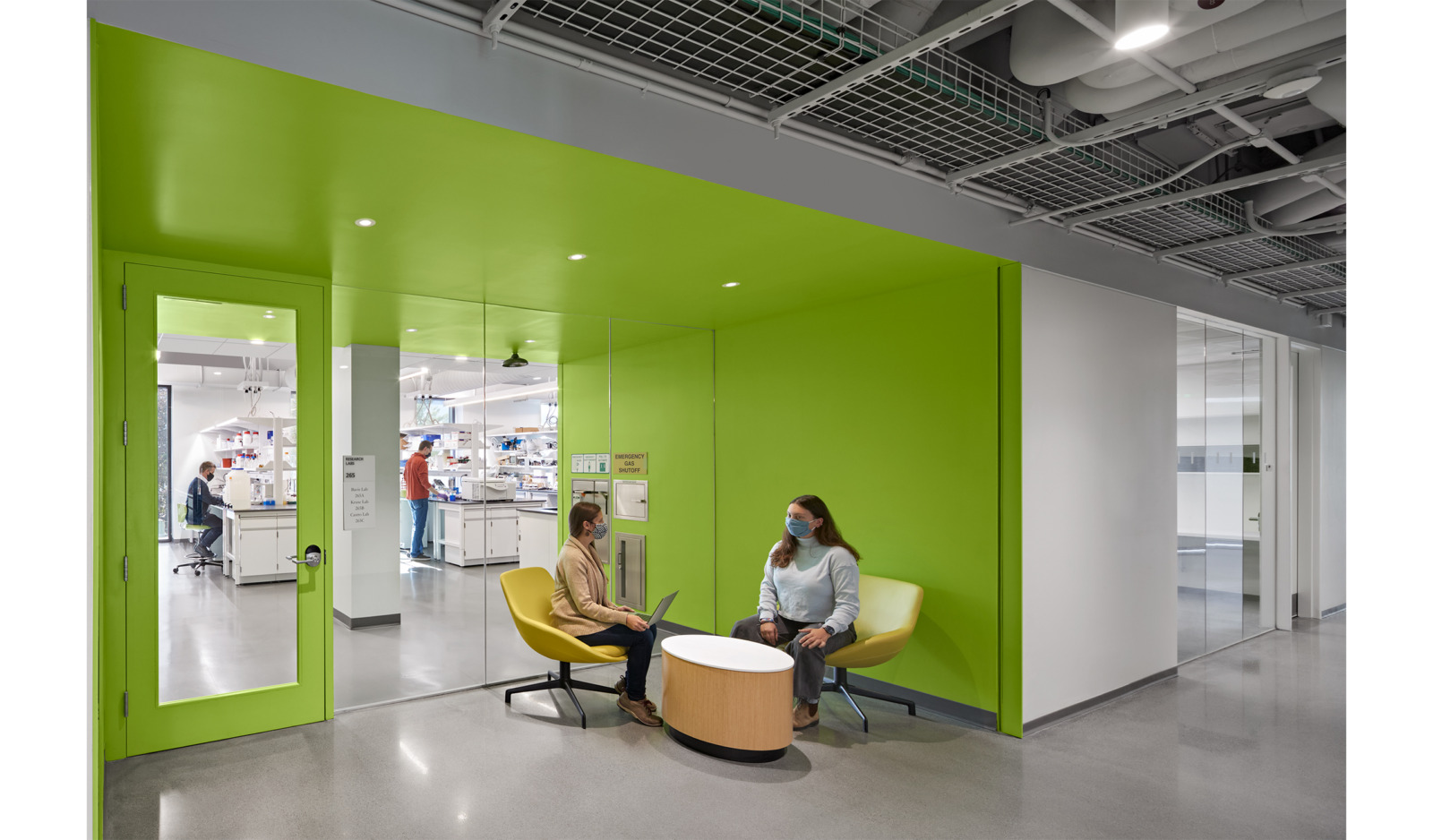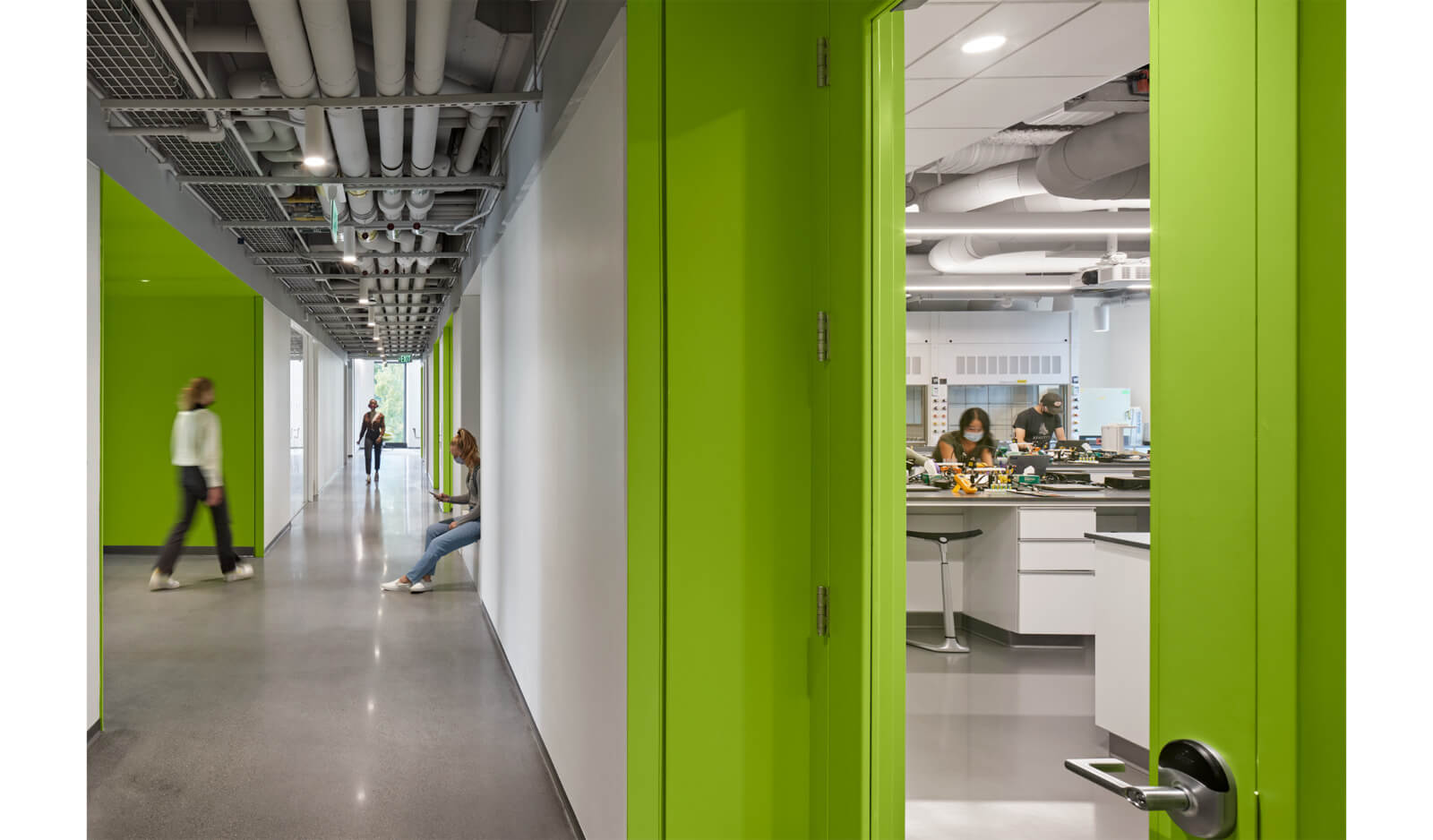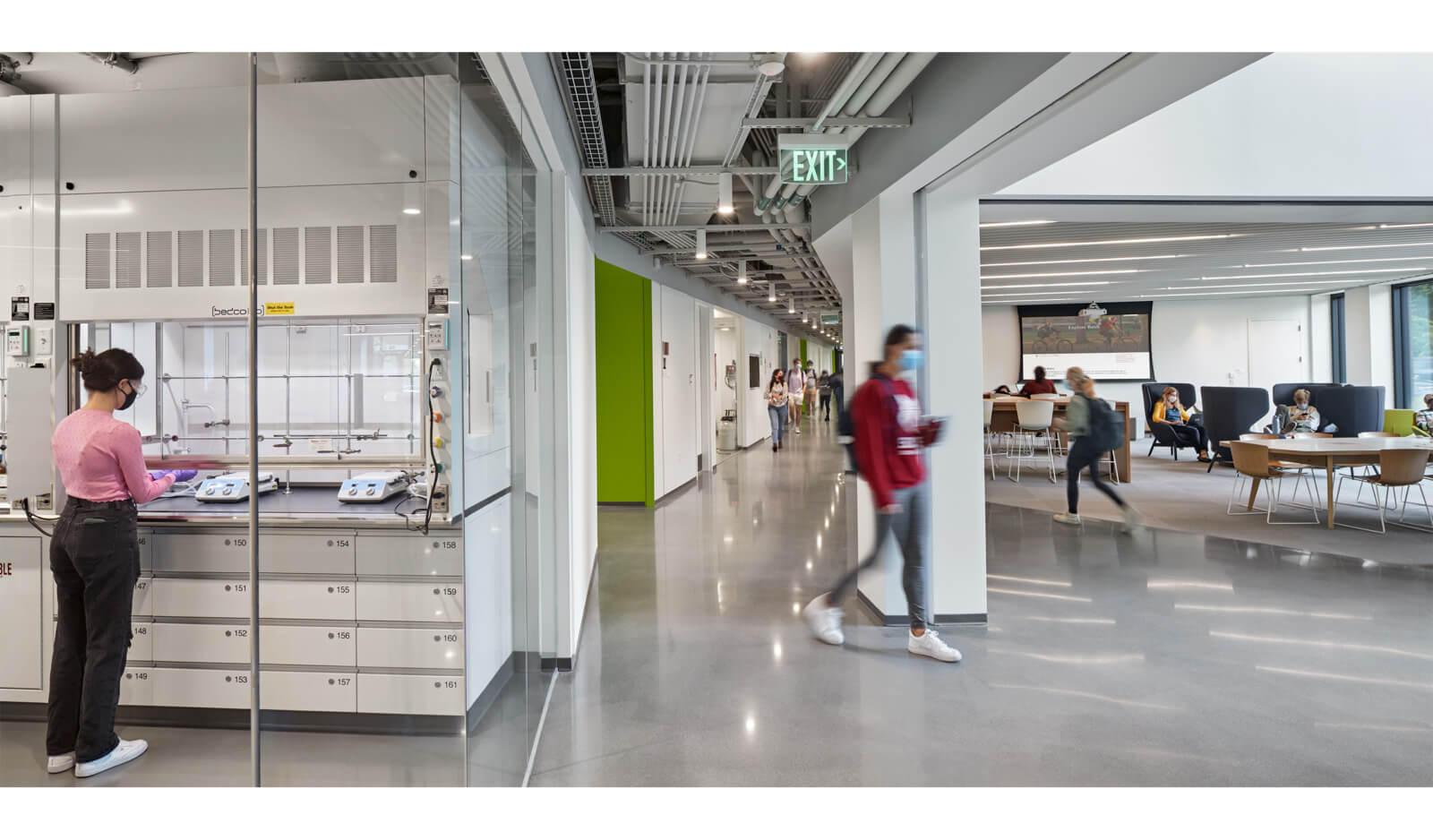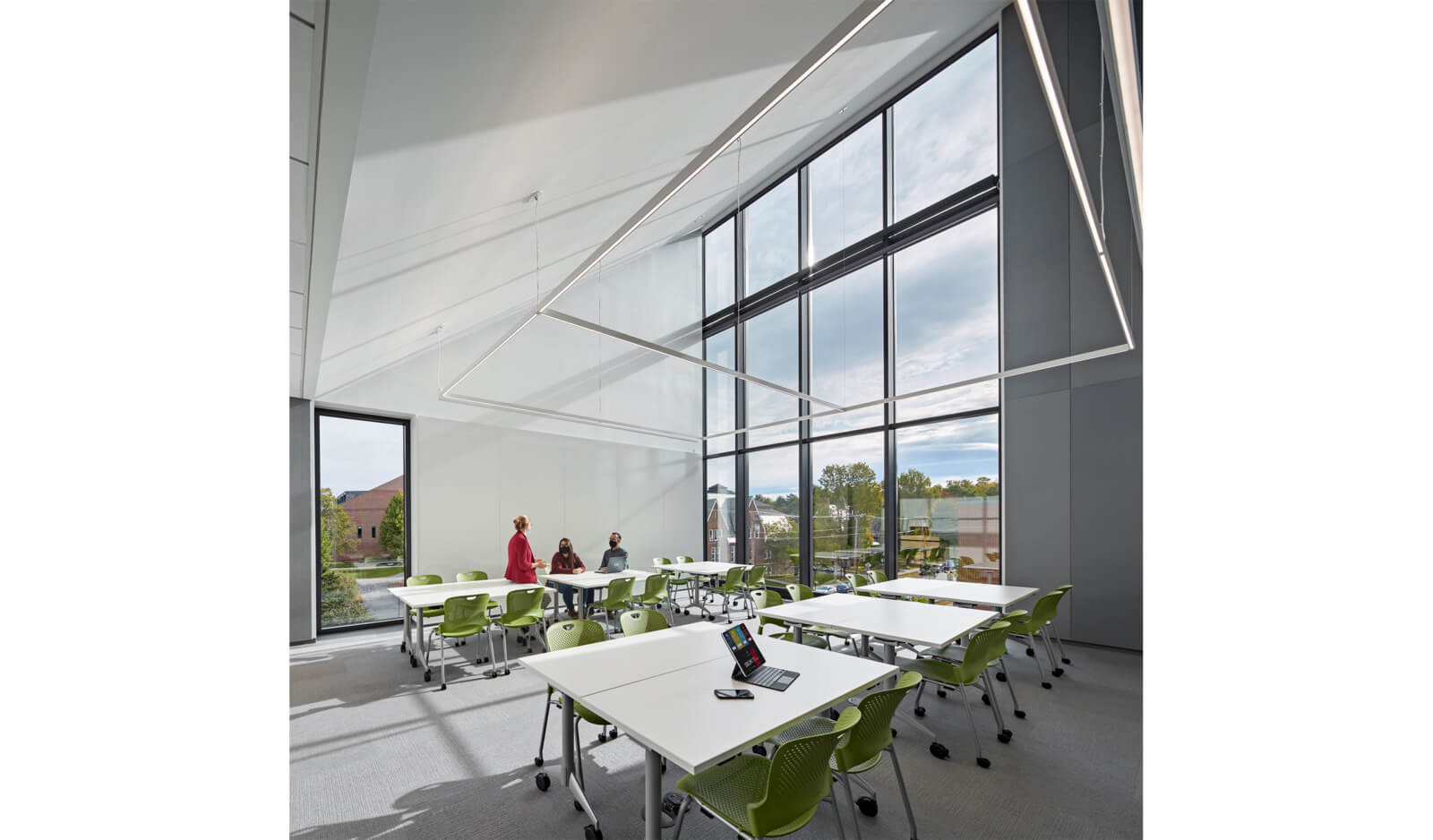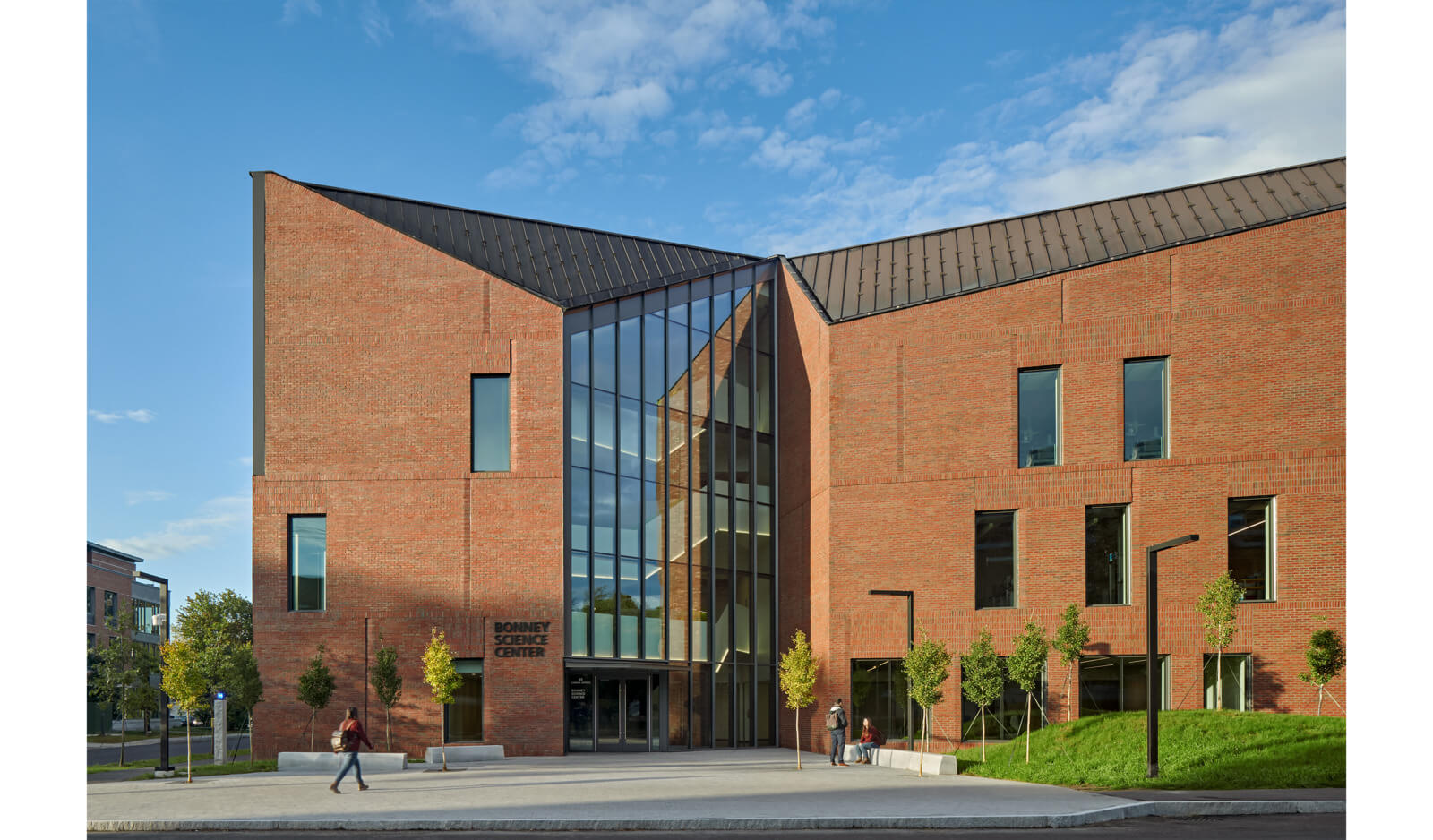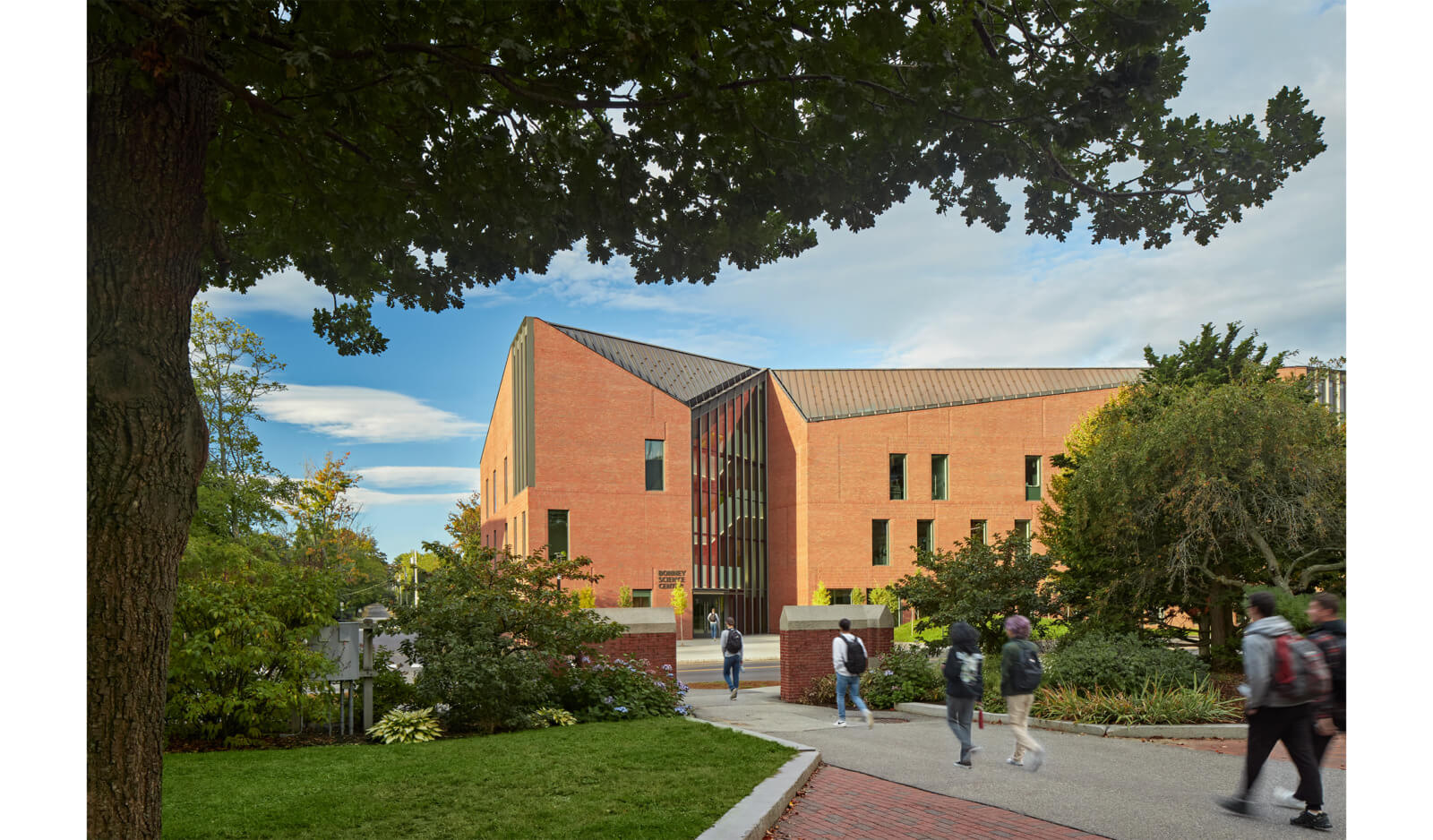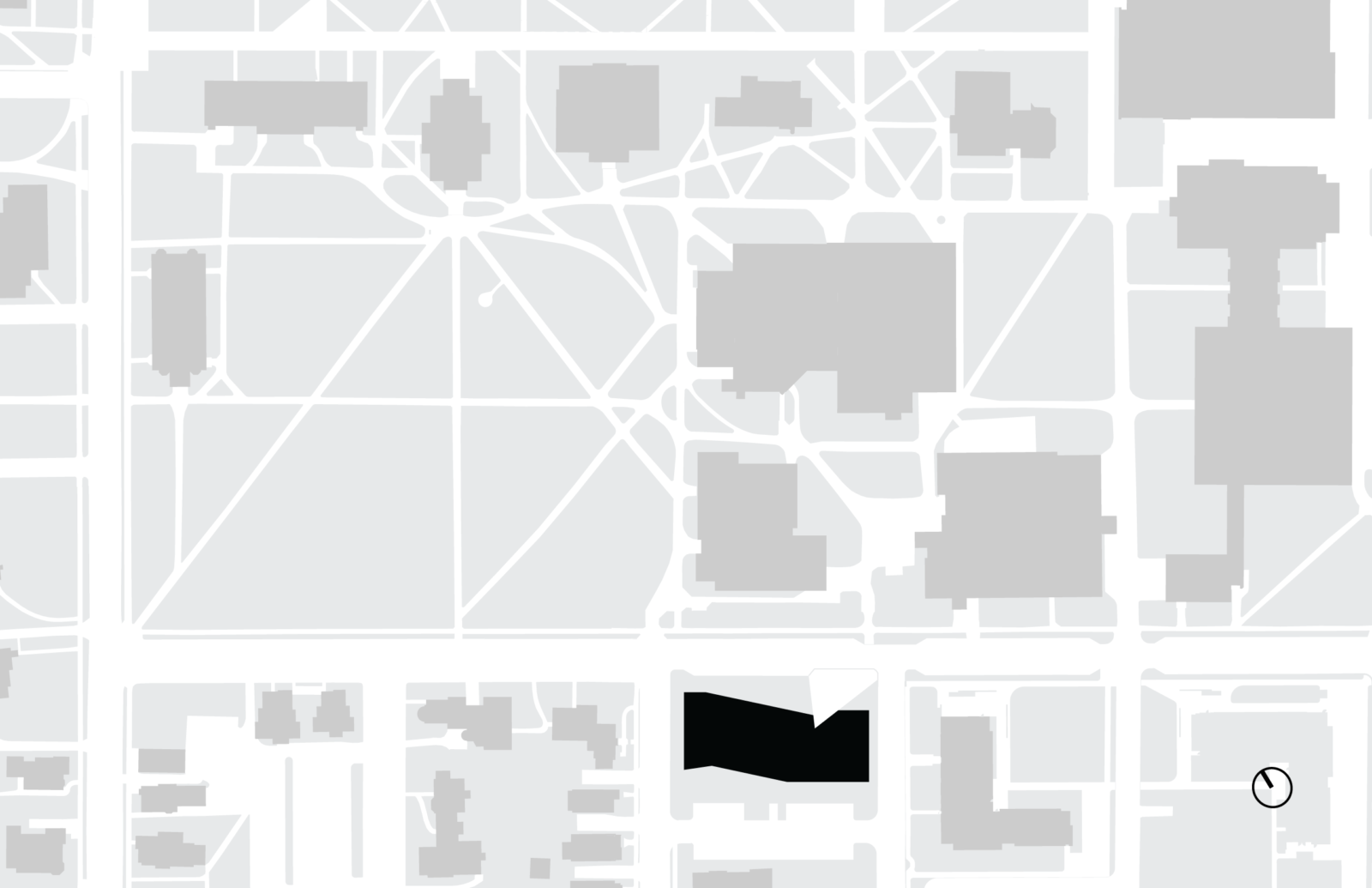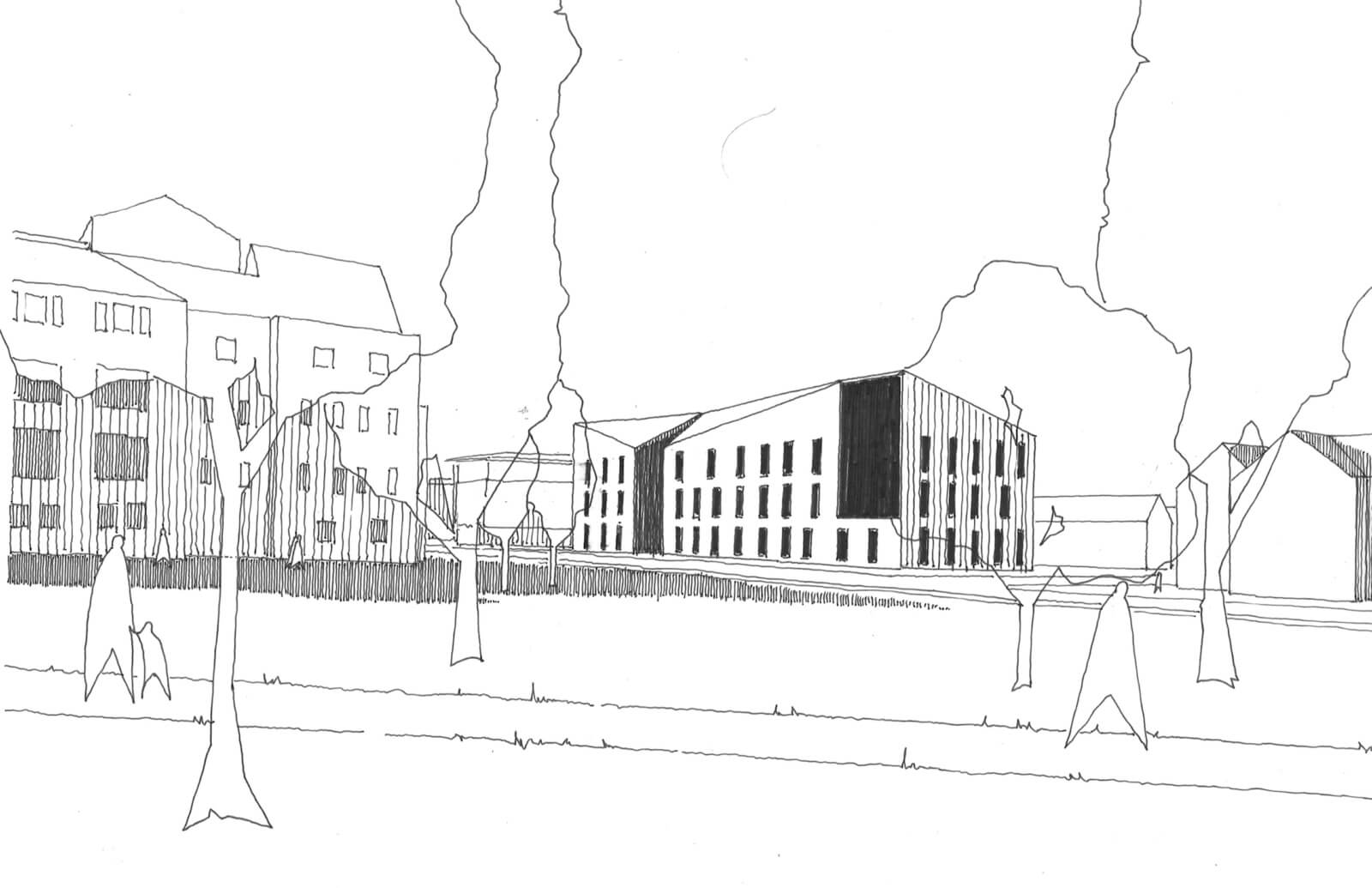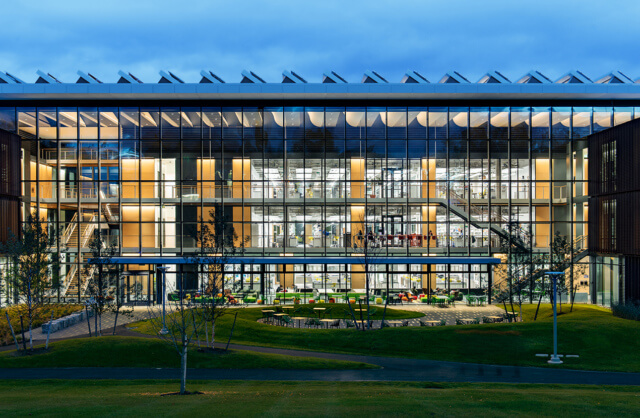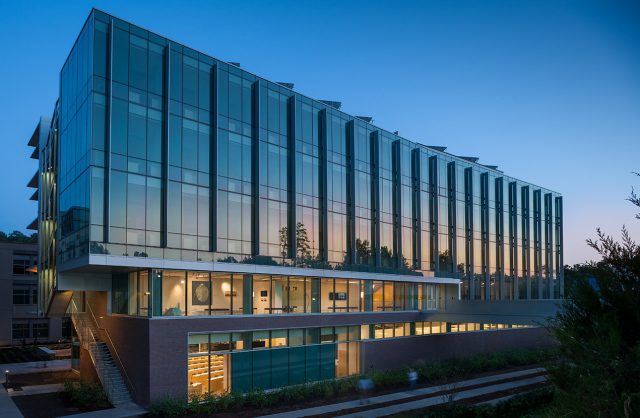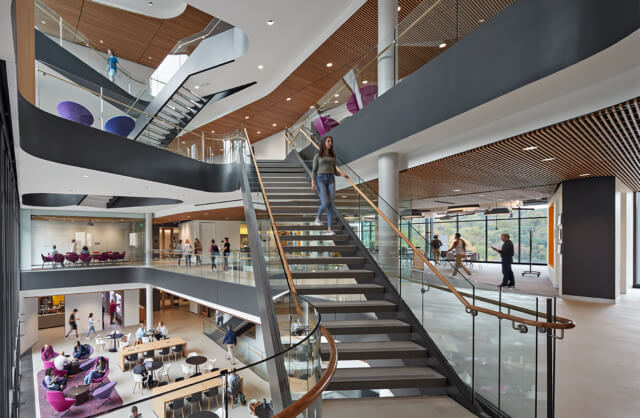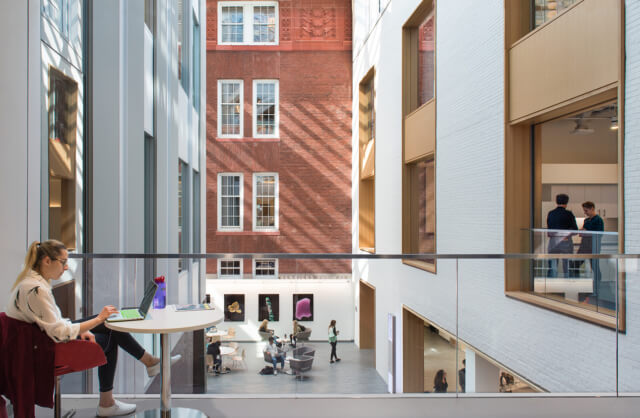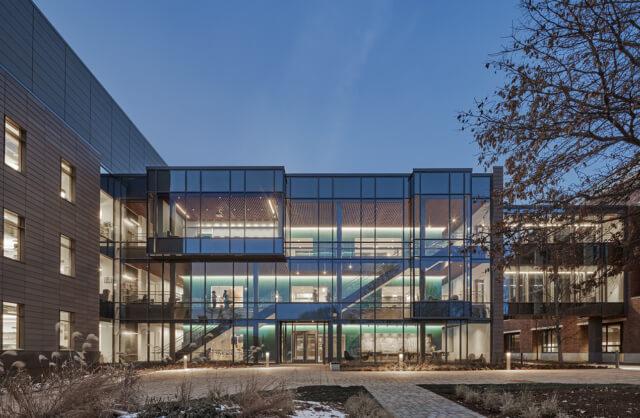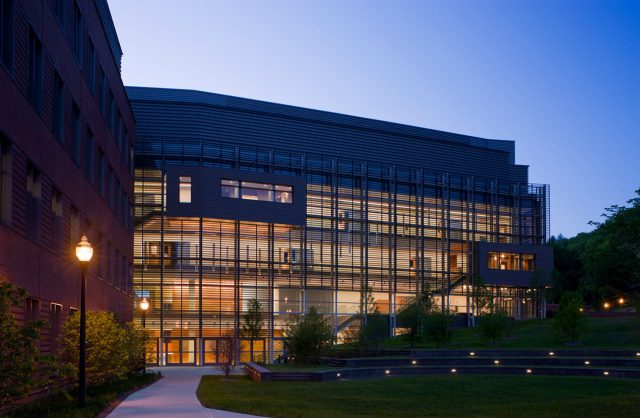The new Bonney Science Center at Bates College is an exploration of contemporary expression in deep dialogue with the context of a traditional New England college campus. The new building will foster the evolution of science education at the College, embracing the advanced technologies and interdisciplinary collaboration that characterize bioscience research and teaching. As the first academic building to be built outside the campus core and across a major street, it is critical to establish its identity as part of Bates College’s campus.
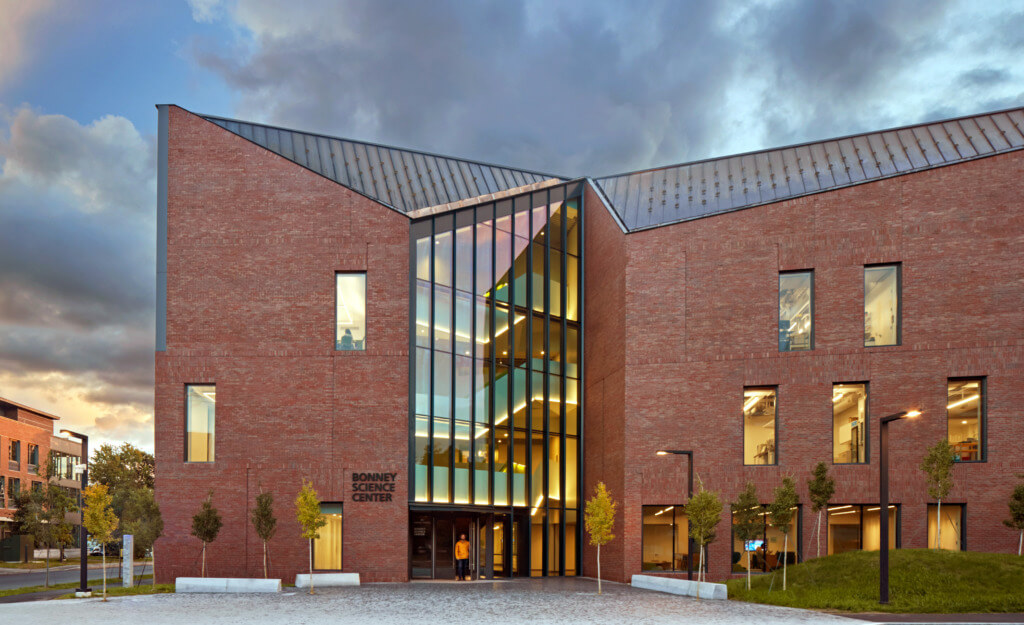
Bates College
Bonney Science Center
Project Statistics
LOCATION
Lewiston, ME / United States
Completed
2021
TOTAL SQUARE FOOTAGE
65,000 GSF
PROGRAM COMPONENTS
Biology, Chemistry, Neuroscience
IN THE NEWS
Team
Robert J. Schaeffner, FAIA, LEED AP
Principal-in-Charge
Ryan Murphy, AIA, LEED AP
Project Architect
Michael Hinchcliffe, AIA, LEED AP
Project Manager
Abigail Klima, AIA
Planner/Programmer
James Lanzisero, AIA
Architect
Nickolas LaVita, AIA, LEED AP
Architect
Michael J. Quinn, AIA, CSI, CCS, LEED AP
Architect
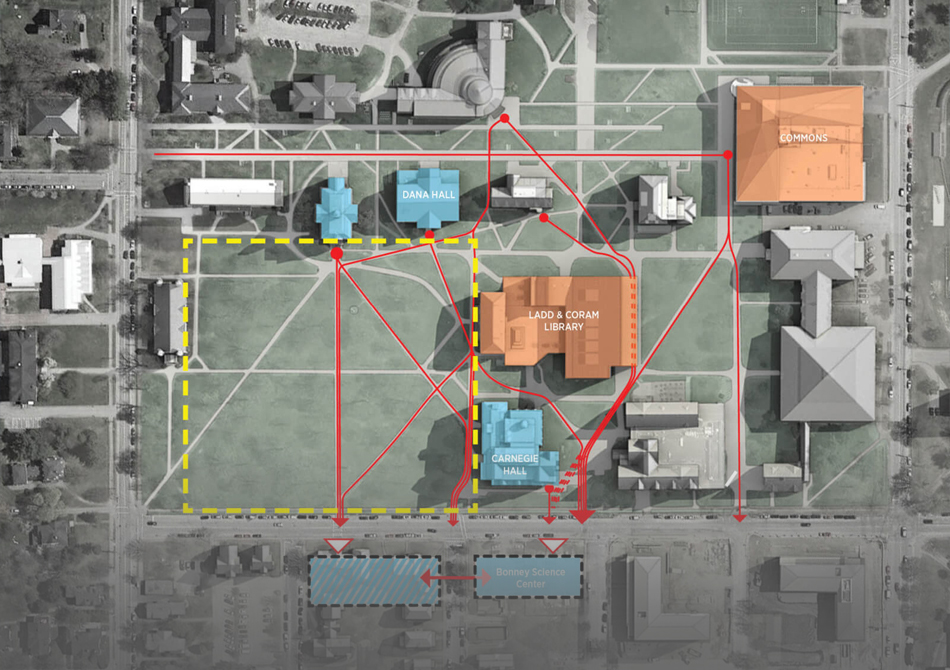
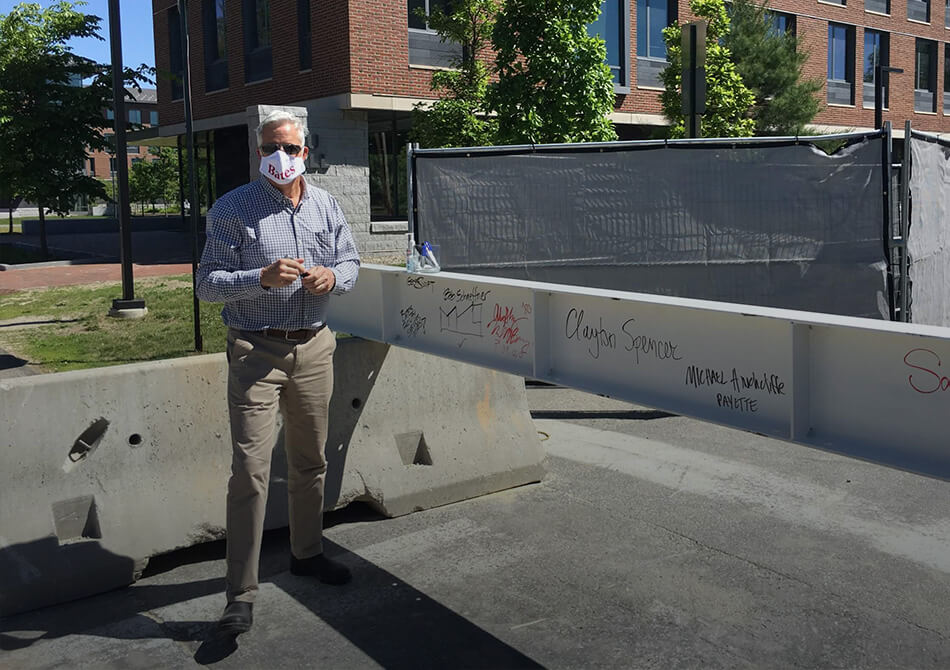
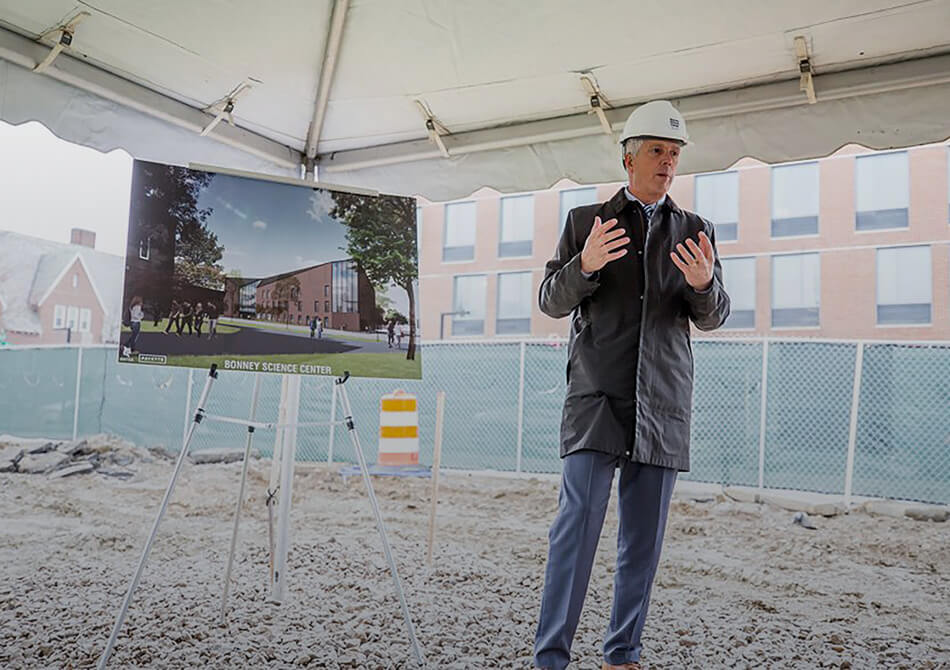
DESIGN THAT IS BOTH CONTEMPORARY AND CONTEXTUAL
The design of the Bonney Science Center uses an expressive roof form to recall the traditional campus contextual elements such as gables and dormers in a contemporary way. The new building is both part of the campus fabric and a contemporary addition to the panoply of roof forms, with its own singular identity.
a hive of collaboration
Being the first academic building south of Campus Avenue, the Bonney Science Center employs large windows at key spaces to be visibly connected to the historic campus core. A two story study lounge and a variety of student collaboration spaces welcome the entire Bates community to the sciences. A simple, single corridor on each floor maintains a sense of intimacy and collegiality while the dramatic central stair creates a focal point for the entire building.
This building will be transformative for Bates. The new building, together with renovations of existing science facilities that will follow, will give Bates’ students and faculty a physical platform commensurate with their talent and ambition.
Clayton Spencer, Bates College President

